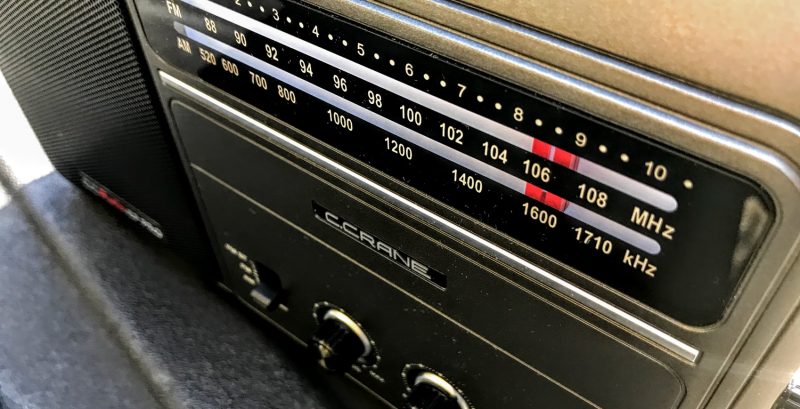 Many thanks to SWLing Post contributor, William Lee who shares the following story via Nieman Labs. Note that this is an excerpt from the story and that my comments follow:
Many thanks to SWLing Post contributor, William Lee who shares the following story via Nieman Labs. Note that this is an excerpt from the story and that my comments follow:
Radio listening has plummeted. NPR is reaching a bigger audience than ever. What gives?
This year, for the first time, NPR will make more money from underwriting on podcasts than on its radio shows.
Since the pandemic took hold in the United States, NPR’s radio ratings have taken a nosedive. Half of AM/FM listening in the United States takes place in a car, but between reduced (or eliminated) commutes and social distancing, there’s been a steep decline in the drivers that make up public radio’s traditional broadcast audience.
“People who listened to NPR shows on the radio at home before the pandemic by and large still do,” NPR’s own media correspondent, David Folkenflik, reported on July 15. “But many of those who listened on their commute have not rejoined from home. And that threatens to alter the terrain for NPR for years to come.”
Even as its legacy platform’s audience has declined, though, NPR says it is reaching more people than ever. The dip in radio listenership — 22 percent — has coincided with a record number of people turning to NPR on virtually every other platform. More people than ever are reaching NPR through the website, apps, livestreams, and smart speakers (“Alexa, I want to listen to NPR”).
[…]Some of the changes in NPR’s audience mirror what we’ve seen elsewhere in the news industry — traffic to news sites spiked in the early months of the pandemic — but the pandemic’s long-term effects seem poised to have a unique impact on radio listenership.
NPR’s senior director of audience insights, Lori Kaplan, has said public radio’s audience includes a disproportionate percentage of workers who are able to do their jobs remotely during coronavirus shutdowns — and that these professionals are interested in continuing to work from home even after we’ve left coronavirus in the rearview mirror.
“We’re experiencing a sea change,” Kaplan told Folkenflik. “We’re not going back to the same levels of listening that we’ve experienced in the past on broadcast.”
[…]NPR’s leaders have been reading the tea leaves. They’ve seen the studies showing younger generations overwhelmingly use the internet and their phones (not radios) for audio. In other words, they knew this shift was coming. They just didn’t know it would happen all at once.
“It was so clear people’s behaviors were changing,” said Tamar Charney, who leads NPR’s digital strategy. “You’d look at the demographic trends and young people were not listening to radio like older people.”[…]
Continue reading the full story at Nieman Labs.
This is a fascinating report and I’m willing to bet NPR has nothing to lose by being open about listening numbers and platforms compared to some commercial networks.
I’ve spoken with a number of friends in the commercial radio industry and the story is very familiar: since the pandemic especially, less people use over-the-air radio to listen to programming. The majority of over-the-air radio listening is done in the car and with the C-19 pandemic, there’s simply been less driving and commuting.
We radio enthusiasts are unique compared with our neighbors in that we actually have radios in our homes.
There is a trend, though, above and beyond anything pandemic related and it’s hard to ignore: with the proliferation of mobile Internet devices that anyone and everyone carries on their person, consumers prefer and expect on-demand content. If you have a radio show on an FM station and it’s not offered as a podcast or via one of the streaming networks, you could be missing out on the bulk of your potential audience.
Even though I’m a hard-core radio enthusiast (by pretty much any measure), I appreciate on-demand content. For example, my staple evening news show these days is Marketplace. I prefer listening to the show live at 18:00 local on WCQS (88.1 FM) even though the signal isn’t super strong at my home (fortunately, I’ve got some brilliant radios to pull it in!). At least half of the time, however, family plans intrude on that 18:00-18:30 time slot, so I rely on the Marketplace podcast version of the show which is typically posted thirty minute after the end of their live show. So even though I’m a radio enthusiast, I still rely on streaming content for my favorite news show.
As technology and listener habits shift, I do wonder how local radio stations will adapt.
We’ve a number of SWLing Post community members who work in the radio industry around the world. Feel free to chime in and comment with your thoughts and experience.
